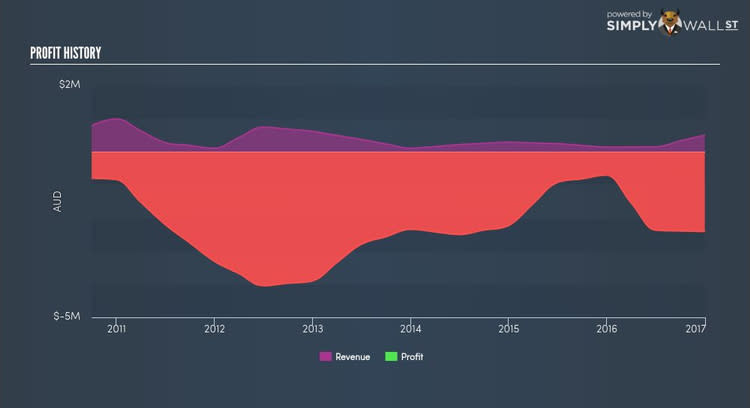Before You Buy Gullewa Limited’s (ASX:GUL), You Should Consider This

For Gullewa Limited’s (ASX:GUL) shareholders, and also potential investors in the stock, understanding how the stock’s risk and return characteristics can impact your portfolio is important. There are two types of risks that affect the market value of a listed company such as GUL. The first risk to consider is company-specific, which can be diversified away when you invest in other companies in the same industry as GUL, because it is rare that an entire industry collapses at once. The other type of risk, which cannot be diversified away, is market risk. Every stock in the market is exposed to this risk, which arises from macroeconomic factors such as economic growth and geo-political tussles just to name a few.
Not all stocks are expose to the same level of market risk. A popular measure of market risk for a stock is its beta, and the market as a whole represents a beta value of one. A stock with a beta greater than one is expected to exhibit higher volatility resulting from market-wide shocks compared to one with a beta below one.
View our latest analysis for Gullewa
An interpretation of GUL's beta
With a five-year beta of 0.56, Gullewa appears to be a less volatile company compared to the rest of the market. This means that the change in GUL's value, whether it goes up or down, will be of a smaller degree than the change in value of the entire stock market index. GUL's beta implies it may be a stock that investors with high-beta portfolios might find relevant if they wanted to reduce their exposure to market risk, especially during times of downturns.
Could GUL's size and industry cause it to be more volatile?
A market capitalisation of AUD $3.30M puts GUL in the category of small-cap stocks, which tends to possess higher beta than larger companies. Moreover, GUL’s industry, materials, is considered to be cyclical, which means it is more volatile than the market over the economic cycle. As a result, we should expect a high beta for the small-cap GUL but a low beta for the materials industry. This is an interesting conclusion, since both GUL’s size and industry indicates the stock should have a higher beta than it currently has. There may be a more fundamental driver which can explain this inconsistency, which we will examine below.
Can GUL's asset-composition point to a higher beta?
An asset-heavy company tends to have a higher beta because the risk associated with running fixed assets during a downturn is highly expensive. I test GUL’s ratio of fixed assets to total assets in order to determine how high the risk is associated with this type of constraint. Since GUL’s fixed assets are only 1.07% of its total assets, it doesn’t depend heavily on a high level of these rigid and costly assets to operate its business. Thus, we can expect GUL to be more stable in the face of market movements, relative to its peers of similar size but with a higher portion of fixed assets on their books. Similarly, GUL’s beta value conveys the same message.
What this means for you:
Are you a shareholder? You may reap the benefit of muted movements during times of economic decline by holding onto GUL. Its low fixed cost also means that, in terms of operating leverage, its costs are relatively malleable to preserve margins. I recommend analysing the stock in terms of your current portfolio composition before increasing your exposure to the stock.
Are you a potential investor? You should consider the stock in terms of your portfolio. It could be a valuable addition in times of an economic decline, due to its low fixed cost and low beta. However, I recommend you to also look at its fundamental factors as well, such as its current valuation and financial health to assess its investment thesis in further detail.
Beta is one aspect of your portfolio construction to consider when holding or entering into a stock. But it is certainly not the only factor. Take a look at our most recent infographic report on Gullewa for a more in-depth analysis of the stock to help you make a well-informed investment decision. But if you are not interested in Gullewa anymore, you can use our free platform to see my list of over 50 other stocks with a high growth potential.
To help readers see pass the short term volatility of the financial market, we aim to bring you a long-term focused research analysis purely driven by fundamental data. Note that our analysis does not factor in the latest price sensitive company announcements.
The author is an independent contributor and at the time of publication had no position in the stocks mentioned.

